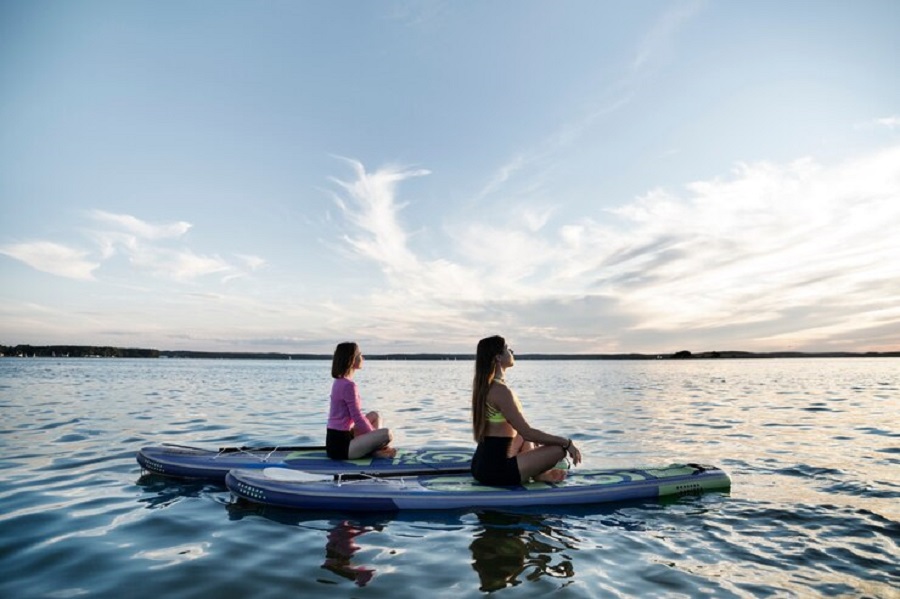With the sun on your face, the wind in your hair, and the gentle splash of the paddle against the water, paddleboarding offers a serene escape and a fantastic workout. But the first hurdle comes before you even hit the water: inflatable or hard paddle board? Recently, paddle boards inflatable have become more popular. Each type has advantages and drawbacks, catering to different preferences and needs.
Let’s break down the key differences to help you find your perfect match.
1. Portability and Storage:
• Inflatable Paddle Board:
Inflatables are renowned for their portability. After deflating, they can be rolled up and easily stored in a compact bag, making them ideal for those with limited storage space or wanting to take their board on a trip. The lightweight design of inflatable paddle boards makes them convenient for travelers or adventurers who want to explore various water bodies.
• Hard Paddle Board:
Hard paddle boards, made from materials like fiberglass or epoxy, are more rigid and less flexible than inflatables. While they may offer better performance on the water, their bulkier design makes storage and transportation less convenient. Hard boards usually require roof racks or larger storage spaces, limiting their appeal to those with smaller vehicles or living spaces.
2. Durability:
• Inflatable Paddle Board:
Modern inflatable paddle boards are constructed with durable materials such as military-grade PVC, making them surprisingly robust. This durability benefits those exploring rocky shorelines, rivers with obstacles, or paddling in areas with potential impacts. Inflatables are less prone to dings and scratches, making them an excellent choice for beginners or those seeking a low-maintenance option.
• Hard Paddle Board:
Hard boards are generally more rigid and less susceptible to flexing, providing a stable platform on the water. However, they are more prone to dings and scratches, especially in rocky or shallow areas. Repairing a damaged hard board requires more expertise and specialized materials than fixing an inflatable board.
3. Performance:
• Inflatable Paddle Board:
In recent years, inflatable paddle board technology advancements have significantly improved their performance. High-quality inflatables now offer stability, maneuverability, and speed comparable to hard boards. However, they may still have a slightly different feel on the water due to their flexibility.
• Hard Paddle Board:
Hard boards are often praised for superior performance, especially in speed and responsiveness. They glide more efficiently through the water and are generally favored by experienced paddlers prioritizing performance over convenience. Hard boards are a popular choice for those who engage in competitive paddleboarding.
4. Cost:
• Inflatable Paddle Board:
Inflatables are generally more budget-friendly than hard paddle boards. This affordability makes inflatable SUP boards attractive for beginners or casual paddlers who want to explore the sport without a significant upfront investment.
• Hard Paddle Board:
Hard boards, particularly those made with high-end materials, can be more expensive. Their performance capabilities and durability often justify the cost. However, the higher price point may deter entry-level paddleboard enthusiasts.
Choosing between an inflatable and a hard paddle board depends on your needs, preferences, and lifestyle. Both types offer an enjoyable paddleboarding experience, and the best choice is the one that aligns with your requirements and priorities.

